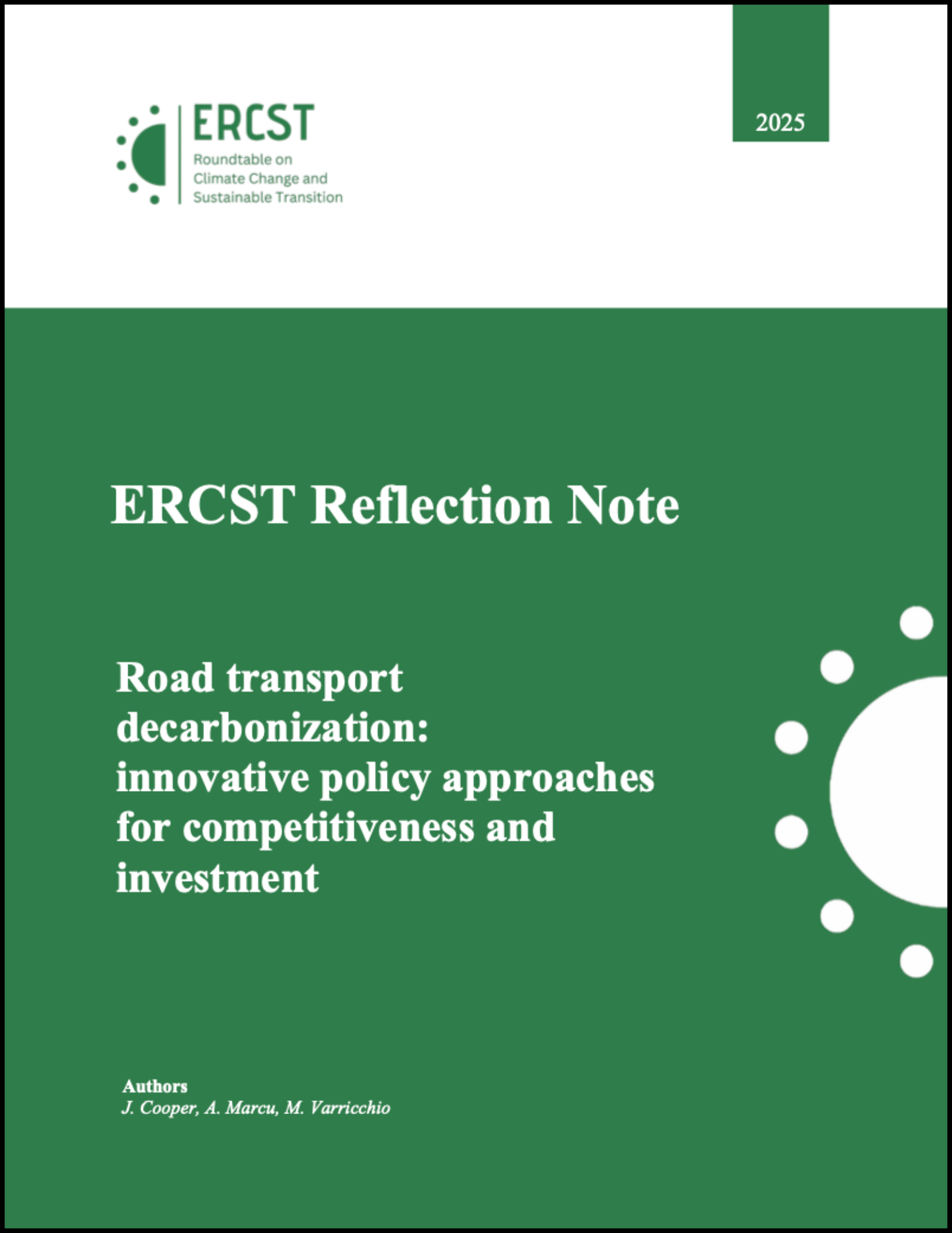
- This event has passed.
Brainstorm on mechanisms for ‘Incentivising Carbon Dioxide Removal Technologies’
September 24 @ 09:30 - 12:30
Carbon Dioxide Removal Technologies (CDRTs) are expected to play an increasingly important role, but up to and after 2050. At the international level the IPCC highlights how they could be necessary: the IPCC notes that CDR deployment over the 21st century is substantial in most pathways considered 1,5°C-consistent.
In order to move ahead with CDRTs, they need to be incentivized (not least financially) within an enabling framework. The focus of ERCST on this topic is therefore be on how to incentivise CDRTs, both at the local level (EU) and cross-border (Article 6 of the Paris Agreement).
Both at the international and EU level there is a clear future reliance on CDRTs, but there are still considerable issues with CDRTs. As yet many still remain unproven, especially at the level they would need to be deployed to match the expectations. The environmental sustainability in the longer term is also not always guaranteed. Therefore, this workstream will not promote specific CDRTs, but rather focus on the enabling framework that is necessary to deploy these technologies at scale, if they are proven to be sustainable.
ERCST started the session with a short presentation on current state of play on CDRTs, how it is envisaged in key strategies and forward-looking scenarios, and elements of potential mechanisms and frameworks to incentivise CDRTs effectively while ensuring their long term sustainability. This presentation was be followed by a round of initial remarks from selected stakeholders, focusing on the following questions:
- Which options are there for a framework to incentive CDRTs? For example, within the EU, the mechanisms for enabling CDRTs could be embedded in the EU ETS, the Common Agricultural Policy, and/or a common framework. What would work better?
- How can emission reductions through CDRTs be made available for international trading under Article 6 of the Paris Agreement?
- How would the point of emission be defined in both EU ETS and Article 6? Can CCS for enhanced oil recovery or coal plants with CCS be considered CDRTs?
- How does CCU fit into this story, especially considering the ECs reliance on synthetic fuels and materials in its long-term strategy scenarios.
- Should there be a role for energy in the CCS discussion, or should it focus on currently non-abatable industrial emissions?
- How could REDD+, and experiences learned from it, fit into this picture?
Workshop Material(s)
Agenda
Presentation by ERCST
Presentation by A. Vihavainen, Puro
Presentation by H. Felder, Stora Enso
Presentation by P. Zakkour, KAPSARC, Carbon Counts
Presentation by S. Yeh, Chalmers University of Technology
Presentation by O. Geden, SWP
Presentation by T. Haugland, Carbon Limits
ERCST summary note
Related Events
Stakeholder Roundtable – Future of Emissions Trading in the EU: Price Signal and Competitiveness
February 6 @ 10:00 - 12:00Launch Event – Omnibus Regulation: on CSRD and CSDDD
February 7 @ 10:00 - 12:00Focus Group – Bioenergy with Carbon Capture and Storage: Balancing Land Use and CDR Potential
February 13 @ 15:00 - 16:30Expert consultation: Solutions for exports of EU CBAM-covered goods
February 17 @ 15:00 - 16:30Public Debate – Beyond Electrification: Balancing Complexity and Flexibility in the EU’s Sustainable Fuels Policies
March 4 @ 15:00 - 16:30
Second Stakeholders and Member States Consultation – Implementation and transposition of hydrogen regulations in the EU Member States
January 30 @ 15:00 - 17:00Paper Launch – Unlocking CO₂ Storage Opportunities Outside the EU – Policy Challenges and Business Prospects
January 28 @ 15:00 - 16:30Focus Group: Green Claims Directive (GCD) trilogues – How does the GCD connect with (Voluntary) Carbon Markets?
January 21 @ 10:00 - 11:30

